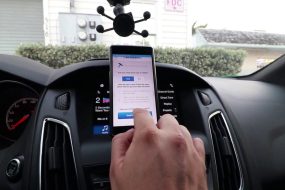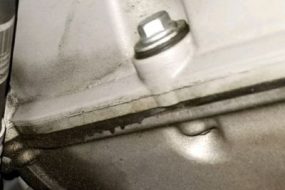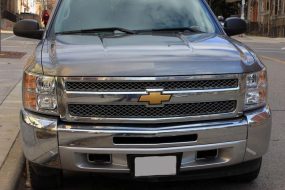
The major function of a fuel filter is to protect the engine from dirt and debris. It filters debris and dirt and prevents it from making its way into your engine. Overtime, the fuel filter can get clogged. When this happens, the solution is to replace it with another one.
However, the question is, should you experience more problems after replacing the fuel filter, if that is the case, what are the common problems after changing fuel filter?
The two common problems after changing fuel filter are hard start and misfire or rough idle. The car may not start at first but should be able to start after second and third trial. The car may also misfire or run rough at idle immediately its powered on.
Common Problems After Changing Fuel Filter
The problems you may experience even after replacing your fuel filter are:
Hard Start
The most common problem after replacing fuel filter is hard start. The reason for this is not because your fuel pump had gone bad or is something is wrong with your car. The reason for this is because you recently messed with your fuel lines. Let me explain further.
For you to be able to change your fuel filter, you need to access your fuel tank and possibly remove the material that housed both the fuel pump and filter.
While doing this, the fuel that are already in the fuel pump and the hose in the fuel tank will be removed to able to replace the filter.
After the filter is changed with a new one and it’s installed back into the fuel tank, it will take some time before the car starts again.
This is because, the fuel that was removed from the pump needs to recirculate to the fuel lines before the car starts.
Therefore, do not panic and think the filter you installed is not good when you experience this. It’s just a normal thing. Your car should be able to start when you try the second or third time.
Misfire/Rough Idle
Immediately after changing your fuel filter and start your car, you may experience a little misfire/rough idle as a result of the fuel that is yet to properly recirculate through the fuel lines. The misfire should go away after the car has run for a while.
Nonetheless, its importance to note that these problems are not problems at all. They are just temporal. It is something that should go away within few minutes your car is turned on.
If after replacing your fuel filter and your car refuse to start, then there’s something wrong with your car. Your technician should check it out.
What to Do Before Replacing Fuel Filter?
Before replacing a fuel filter, you should:
- Allow the Car to Cool Down: Before replacing your fuel filter, you should park the car and allow it to cool down for a while before losing the gas cap to access the filter.
- Remove the Battery: You can choose to disconnect the battery before replacing your fuel filter. It is not a must thing to do. It depends on what you want.
- Ensure You Don’t have a Full Tank: It’s better not to have full tank when doing a fuel filter replacement than having a full tank. This is to make removing pressure from the fuel lines much easier. Quarter tank fuel is better.
- Work in a Ventilated Area: Ensure you’re doing the replacement in a ventilated area so that the combustion fumes don’t accumulate.
What You Should Do After Installing New Fuel Filter
- After installing your fuel filter, ensure that you cover and tighten your fuel tank before arranging your seat.
- Check to be sure that fuel is not leaking anywhere from your system.
- Put you key in ignition and try to start the car. If the car could start the first time, turn it off and start it again. Keep trying this until the car starts
- When the car starts, do not drive off immediately. Allow the car to run on idle to enable enough fuel to circulate through the fuel lines.
Why is my Car Struggling to Start after Changing Fuel Filter?
The reason why your car struggles to start after changing fuel filter is because there’s not enough fuel flow in the fuel lines. Once the fuel circulates properly through the fuel lines, the car should be able to start.
It’s normal for this to happen, so don’t worry about it. As long as your car is able to start after few trials, it should be able to start afterwards and will not happen again except something else got spoilt while replacing the fuel filter.
Signs of a Bad Fuel Filter
The signs of a bad fuel filter are:
- Poor Gas Mileage: When your fuel filter is bad or clogged, it will affect your gas mileage. You will start experiencing a bad fuel economy, in the sense that your car will be consuming more fuel than usual.
- Misfiring: Your car will start misfiring when idle and when on low speed.
- Check Engine Light: The check engine warning light will come on if your fuel filter goes bad.
- Slow Acceleration: You will start experiencing slow and unresponsive acceleration because the clogged or bad fuel filter is not allowing enough fuel into the engine for performance
- Poor Engine Performance: Your engine performance will reduce and may fail to give you the optimal performance it used to.
- Hard Start: You might always find it difficult starting your car. You may have to try the second and third time before the car starts. This is as a result of a bad fuel filter
When to Change your Fuel Filter
You should always change your fuel filter after 30,000 miles. You don’t need to wait until it gets clogged before you can replace it. A good fuel filter equals a good gas mileage and an optimal engine performance.
Conclusion
When the fuel filter is clogged or has a breakage, you will of course know through the signs it will give you. When you change the filter with another one, you may experience a hard start and a minimal misfire which should go away after the car runs for a while.
It’s possible to not experience any issue after changing your fuel filter. However, if after replacing your fuel filter, you start experiencing any problems, your mechanic should check what the problem is and fix it.









